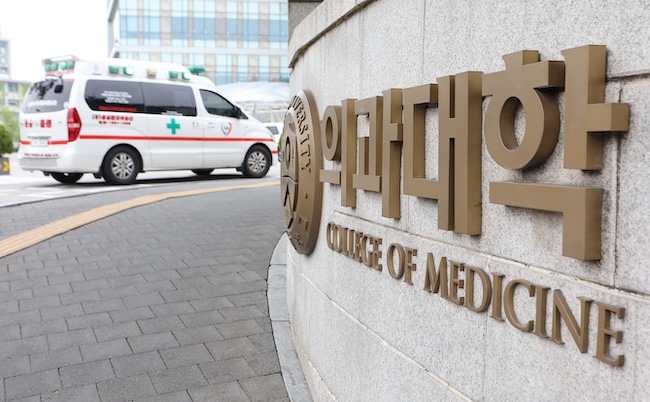
A major concern raised by the medical community is the shortage of donated cadavers for anatomy lessons. (Image courtesy of Yonhap)
SEOUL, May 28 (Korea Bizwire) – As the government plans to increase admissions to medical schools, a major concern raised by the medical community is the shortage of donated cadavers for anatomy lessons, which could undermine the quality of medical education.
While promoting body donation is crucial for high-quality medical training, a recent survey revealed that even though many South Koreans are aware of the donation system, they are hesitant to participate.
To ensure smooth anatomical practice, which is essential for medical education, experts suggest establishing an appropriate support system for donors and their families, along with improving the recognition of donors’ contributions.
The National Institute for Bioethics Policy conducted a survey from October 10 to 31 last year, targeting 500 adults interested in body donation. The survey aimed to gauge public awareness of the donation system and identify factors hindering participation.
The survey was part of a research project titled “Study on Improving the System of Honors and Support for Body Donation,” commissioned by the Ministry of Health and Welfare. The National Institute for Bioethics Policy published a portion of the report in the recent issue of the journal “Life, Bioethics, and Policy.”
The survey found that 61.6% of respondents were aware of the system for donating bodies free of charge for educational purposes. Additionally, 70% knew about the option to donate body parts for research purposes beyond dissection.
When asked about the necessity of promoting body donation, 45.8% responded “necessary,” 39% said “average,” and 8.2% answered “very necessary.”
However, when asked about their willingness to donate their bodies or those of their family members after death, the average score for personal donation was 2.91 out of 5, while the score for family member donation was lower at 2.70.
Reasons cited for not donating included aversion to body disfigurement due to Confucian cultural influences, doubts about the research utility, and distrust in the post-donation management of donated bodies.
The research team stated, “While our society recognizes the need for body donation to some extent, the actual transition to donation remains challenging.” They emphasized the urgency for appropriate measures based on the survey findings.
Currently, it is estimated that medical schools in South Korea require between 1,000 and 1,100 cadavers annually for educational purposes. The research team noted that increasing body donations is desirable to ensure a stable supply, considering regional and institutional demands.
To promote body donation, the research team proposed institutionalizing recognition for donors and support systems for their families through legal and ordinance revisions.
They suggested standardizing the donation procedures, as well as the honors and support provided to donors and their families, which may vary across local governments and institutions.
Additionally, they recommended establishing and operating a national system for managing donated bodies and raising public awareness about body donation.
The research team warned, “While the government plans to increase admissions to medical schools, there are concerns about whether anatomy lessons can be conducted smoothly, especially in regions with unstable body donations.”
They emphasized the urgency of establishing stable body donation procedures, providing appropriate recognition for donors and prospective donors, and offering adequate support for their families.
M. H. Lee (mhlee@koreabizwire.com)






